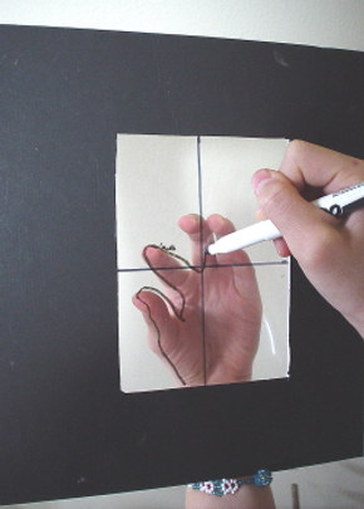 INSTRUCTIONS: Position your non dominant hand on the table. Fold and bend your fingers to create foreshortening. Lay the viewfinder over your hand. This is difficult. You will need to balance the viewfinder carefully. Using the marker, trace exactly what you see. Draw only the parts of the finger that you see. Include folds, wrinkles and lines. Go SLOWLY! Erase marks if you need to. Materials: Viewfinder Waterbased Marker NOT PERMANENT MARKER 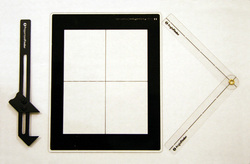 One of the tools that we will use through out the year is a viewfinder. You will create one today. All of the materials can be found on the back table. Materials: Transparency Cardboard window Ruler Permanent Marker Instructions: 1. Use the permanent marker to draw a vertical and horizontal line down the center of the transparency 2. Tape transparency to cardboard window. Make sure that it is in the center and the side with the permanent marker is on THE BACK. 3. Write your name on the view finder. 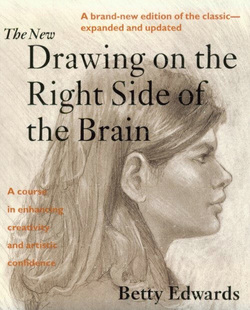 The Origins of the TheoryThe Drawing on the Right Side of the Brain story begins in the late 1960s where art teacher, Betty Edwards, was puzzling over the fact that many of her students struggled to learn to draw when they were mastering new skills in other disciplines. Another puzzle was that students, who had struggled, suddenly seemed to learn how to draw from one week to the next but could not explain why this was so. Betty Edwards began to explore what happens when she was drawing. Her work with her students was illuminated by research published in 1968 by Roger Sperry and colleagues. Betty Edwards developed her theories into a doctoral thesis that later formed the basis of her book, The New Drawing on the Right Side of the Brain, first published in 1979. You can read about the development of her theories in this book which is still in print and has been revised and updated several times since. The Global Skill of Drawing After the book was published, Dr Edwards had another 'aha' moment. She realised that drawing is made up of just five perceptual skills and that together, to form a global skill. What does a global skill mean? Other global skills are reading, driving, learning to ride a bicycle etc. Can you remember how difficult it was learning these skills? But now, I bet you read a newspaper, ride a bike or drive your car without even thinking about it. Learning to draw follows the same process. Just as once you had to learn the alphabet and how a sentence was constructed before you could learn to read… with drawing, if you learn the component perceptual skills of drawing you will be able to draw a perceived object ie. something you can see 'out there'. What are the Perceptual Skills of Drawing?
http://www.learn-to-draw-right.com/betty-edwards.html 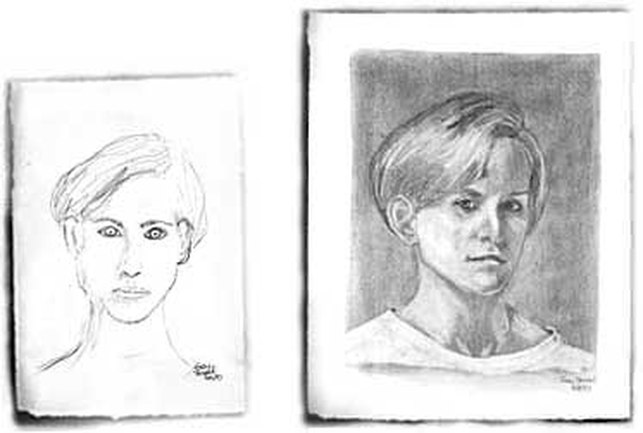 Author and artist Betty Edwards wrote the book " Drawing on the Right Side of the Brain". Two Ways of Knowing Betty Edwards has used the terms L-Mode and R-Mode to designate two ways of knowing and seeing - the verbal, analytic mode and the visual, perceptual mode - no matter where they are located in the individual brain. You are probably aware of these different characteristics. L-mode is a step-by-step style of thinking, using words, numbers and other symbols. L-mode strings things out in sequences, like words in a sentence. R-mode on the other hand, uses visual information and processes, not step-by-step, but all at once, like recognizing the face of a friend. "You have two brains: a left and a right. Modern brain scientists now know that your left brain is your verbal and rational brain; it thinks serially and reduces its thoughts to numbers, letters and words… Your right brain is your nonverbal and intuitive brain; it thinks in patterns, or pictures, composed of ‘whole things,’ and does not comprehend reductions, either numbers, letters, or words."From The Fabric of Mind, by the eminent scientist and neurosurgeon, Richard Bergland. Viking Penguin, Inc., New York 1985. pg.1 Most activities require both modes, each contributing its special functions, but a few activities require mainly one mode, without interference from the other. Drawing is one of these activities. Learning to draw, then, turns out not to be "learning to draw." Paradoxically, "learning to draw" means learning to make a mental shift from L-mode to R-mode. That is what a person trained in drawing does, and that is what you can learn. Go to the Gallery to view the drawings. Please click on the images to enlarge. http://drawright.com/gallery.htm Instructions: Today you will look in the mirror and create a self portrait drawing using pencil. This is a pre-instruction drawing like the image on the left pictured above. 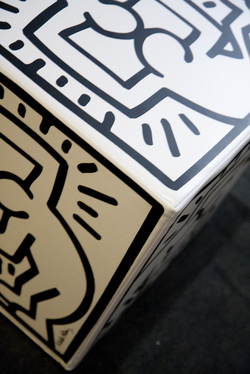 1. Watch the video " Drawing the Line a Portrait of Keith Haring" 2. Please write and answer the following questions in the design folder that you created on your ipad. Please write in complete sentences when answering the questions. Questions: Who was Keith Haring? What type of art did he create? How would you describe his artwork? How did his artwork change the " art world"? Do you like his artwork? Why or why not? 3. Create a drawing of a figure or group of figures in an action pose in a style similar to Keith Haring's artwork. This may be on paper or on your ipad. 4. Create a collage of 8-10 images of Keith Haring's artwork on your ipad using a collage app of your choice. Use this site for images and ideas haringkids.com Please complete the following for homework tonight:
1. Create a folder for our class in evernote, notarize, notablity or google drive . Label it DESIGN. This is where you will be taking notes 2. Search, download or test the following apps - Drawing app - Collage app - Photo editing app - any other art app of your choice 3. Be prepared to write a review on the app in class In class you were asked to write on a post it "Art Is" and place it on the wall in our art room. There is now a great BIG collection of post it notes from 105 students. It is great to see what you wrote.
Your next art challenge is to re-write someones post -it note on a color chip or paint sample in a way that uses TYPOGRAPHY to express the statement. Below is an example of how typography, color and form can recreate a poster. Read about the project by artist Kenji Nakayama and Christopher Hope. |
Studio ArtThis is full year foundation course that will aid in your understanding and creating a wide variety of 2-D and 3-D artwork.
Course ExpectationsWeekly
|

